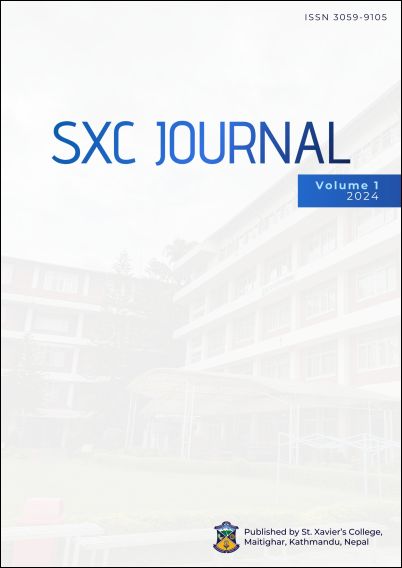Post-Earthquake Survey of Bagmati River Seepage Through Physicochemical Analysis of Water
DOI:
https://doi.org/10.3126/sxcj.v1i1.70878Keywords:
Bagmati River, underground water, earthquake seepageAbstract
Bagmati river has a great cultural, economic and mythological significance. It has also been related to the civilization of Kathmandu valley. Due to the rapid and unmanaged urbanization and industrialization the river has been heavily polluted leading to the water borne hazards and water shortage problem in the capital. Amidst this problem there was a major earthquake in Kathmandu in 2015 which disturbs the land masses in the valley. This research was conducted to assess the physico-chemical parameters of Bagmati river water and ground water from its corridor at about 50 m and 100 m distance for comparison to detect the post-earthquake seepage status of river water from October 2019 to March 2020. In total 10 sites (A-J) were selected from Gokarna to Chovar. From each site 1 river and 2 ground water samples at approximately about 50 m and 100 m radial distance from river were taken. The range of temperature, turbidity, conductivity, TDS, pH, chloride, total hardness, total acidity, total alkalinity, total iron content, total ammonia content, dissolved oxygen content and biochemical oxygen demand (BOD) were recorded to be 13-22 ºC, 150.5-395.5 NTU, 121.1-825 μs/cm, 77.56-528 ppm, 6.5-7.84, 4.97-114.3 mg/l, 34-180 mg/l, 10-224 mg/l, 70-382 mg/l, 0.55-4.156 mg/l, 5-150 mg/l, 0-4.5 mg/l and 5.35-320 mg/l respectively for river water samples and 16-21 ºC, 3.8-52.1 NTU, 25.2-745 μs/cm, 16-476.8 ppm, 6.08-7.61, 5.68-134.9 mg/l, 6-328 mg/l, 10-140 mg/l, 30-340 mg/l, 0.02-5.101 mg/l, 0.026-0.9 mg/l, 2.63-8.1 mg/l and 1.62-16.3 mg/l respectively for ground water samples at 50 m distance from river and 16-20 ºC, 3.1-60 NTU, 25.6-697 μs/cm, 12.8-446.08 ppm, 5.49-8.78, 5.68-44.02 mg/l, 10-300 mg/l, 10-160 mg/l, 14-294 mg/l, 0.015-4.37 mg/l, 0.028-0.54 mg/l, 3.1-8.7 mg/l and 0.63-14.2 mg/l respectively for ground water samples at 100 m distance from the river. As there were significant differences in turbidity, chloride, total acidity, iron, ammonia and BOD among Bagmati and ground water samples, direct mixing of polluted Bagmati river water with nearby ground waters through seepage was not detected. Thus, irrespective of earlier condition, the land masses near the Bagmati territory has not been affected so as to allow deeper seepage of river water by the earthquake of 2015.
Downloads
Downloads
Published
How to Cite
Issue
Section
License
Copyright (c) 2024 The Author(s)

This work is licensed under a Creative Commons Attribution 4.0 International License.
This license enables reusers to distribute, remix, adapt, and build upon the material in any medium or format, so long as attribution is given to the creator. The license allows for commercial use.




